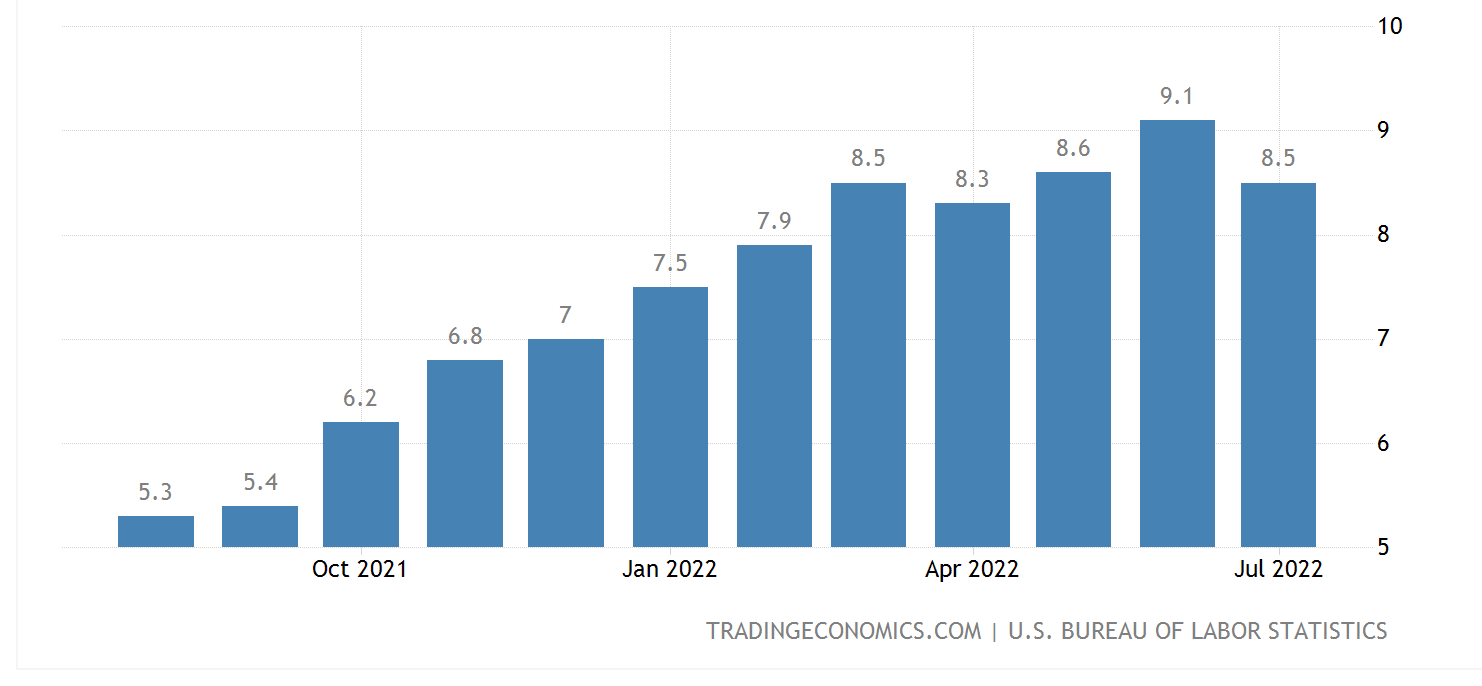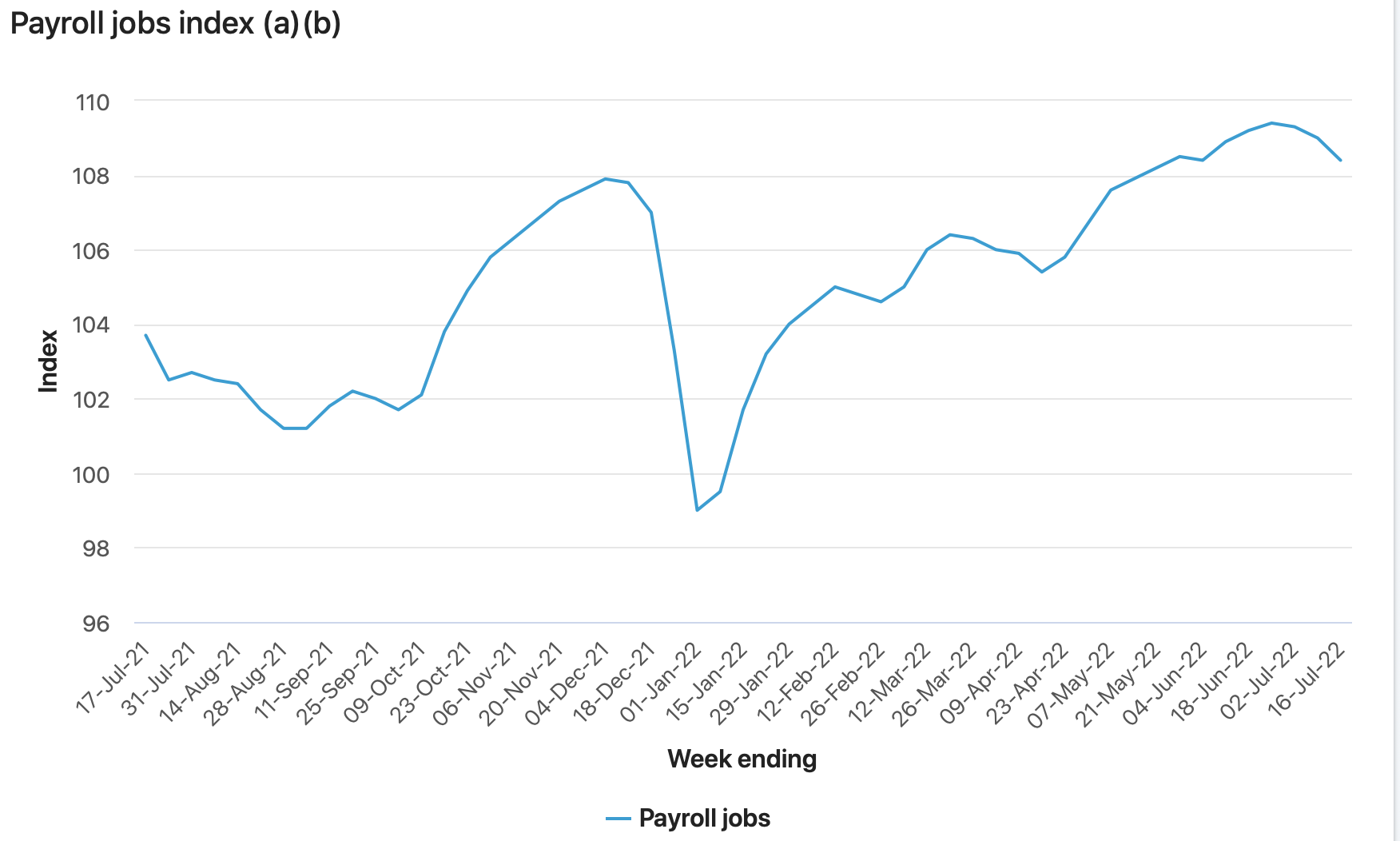Traders’ Diary: Everything you need to get ready for the week ahead

ASX and global economic and corporate calendar for the week beginning 15 Aug. Picture Getty
The ASX 200 was up by 0.24% last week, while the S&P 500 rose by 3%.
Has US inflation finally peaked?
Last week’s headline was all about the US CPI.
The annual headline inflation for July came in at 8.5%, lower than market predictions of 8.7%. In June, that headline rate was 9.1%.
There’s a sense of relief now that inflation might have peaked in the US, leaving some to predict the Fed might be on the verge of pivoting its policy following back-to-back 75bp increases in the last two months.
“The fact that inflation not only decelerated in the US, but at a faster pace than the consensus forecasts was a double win and risk assets are feeling the benefit,” said Oanda analyst, Craig Erlam.
Most analysts however still feel the Fed would have to see broader signs of inflationary pressure softening before it is willing to take its foot off the pedal.
Another important inflation report, the producer price index (or PPI), showed that US price growth is cooling off.
The US PPI in July turned negative for the first time since early in the pandemic, falling 0.5% from a month earlier but is still up 9.8% from a year ago.
“Inflationary pressures are clearly easing, but a lot of that decline is dependent (on) if oil prices continue to grind lower,” said Erlam.
The market is pricing in a 65% chance of a 50bp rate hike when the FOMC next convenes on September 20.
US inflation chart

Australian consumers are less confident
The latest Westpac consumer confidence index showed that Australian consumer sentiment fell again in August, down 3% to 81.2.
But business confidence and conditions have both surprisingly rose in July, up +7 and +20 points respectively.
CBA said the spread between consumer confidence and business confidence is the widest it’s ever been. This is partly because businesses have been able to successfully pass on their higher costs to customers.
[REPORT] Buoyant business boosts inflation risks https://t.co/QT6yfbmzPh #ausecon pic.twitter.com/wrSmHqn6oQ
— CommSec (@CommSec) August 9, 2022
A Westpac report said:
“The August decline in the index was mainly driven by consumers’ increasingly pessimistic expectations of family finances in the next 12 months, and a considerable decline in their buying intentions for major household items.”
Meanwhile, Aussie payroll jobs decreased by 0.8% between the weeks ending 2 and 16 July, according to the ABS.
As per the custom, estimates of wages are not included in this release due to the end of financial year and reporting seasonality.

The Economic Calendar for this week
Source: Commsec and Investing.com
Highlights for the week ahead include: Australia’s labour force data and the Eurozone CPI.
Australia and New Zealand
TUESDAY
CBA household spending intentions for July
Monthly consumer price index indicator
Overseas arrivals and departures for June
Weekly consumer confidence
WEDNESDAY
Wage price index for June qtr
THURSDAY
Labour force for July
Average weekly earnings
Global
MONDAY
Japan GDP
China retail sales
China industrial production
China unemployment rate
TUESDAY
US industrial production for July
EU trade balance
WEDNESDAY
US retail sales for July
US FOMC minutes
THURSDAY
US home sales for July
Euro CPI
The ASX IPO calendar for this week
According to the ASX, no stocks are expected to list this week.
Related Topics
UNLOCK INSIGHTS
Discover the untold stories of emerging ASX stocks.
Daily news and expert analysis, it's free to subscribe.
By proceeding, you confirm you understand that we handle personal information in accordance with our Privacy Policy.








